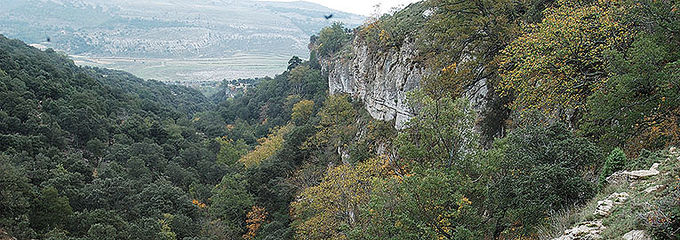VALENCIA. In today's society, fast and frantic, people barely have time to reflect on the origin of the resources used in everyday life. This situation reaches such extremes that an important part of the population in the urban world knows little of what lies beyond the shelves of supermarkets and shops. They may even be surprised when they discover that potatoes must be dug out of the ground or that animals must be sacrificed in order to provide the meat we eat. Needless to say, the knowledge that many of our medicines originate from, or are inspired by, components found in wild plants is almost nil.
Biodiversity is at the basis of our life. Virtually all our activities make use of products originating in wild or cultivated biodiversity. Two-thirds of all humanity depend on plants as the main source of medicine. Moreover, between 25 and 50 percent of new medicines are derived from natural products, and as our knowledge on biodiversity increases, so does this percentage. We have myriad examples.

The Mas d'Asnar (Vilafranca, Castelló) is a good example of a successful sustainable farm in which valuable forest in the Asnar ravine has been preserved (FOTO: A. Aguilella)
Aspirin is based on a molecule discovered in willows (Salix spp.), quinine is derived from Quina (Cinchona spp.), some alkaloids used to treat childhood leukaemia and Hodgkin's disease derive from the Rosy Periwinkle, or the periwinkle of Madagascar (Catharanthus roseus). Part of existing biodiversity has potential medicinal properties yet to be put to the test. Therapy for some of the most serious diseases affecting humankind, such as cancer or AIDS, may derive from natural products.
It is also important to think of ecological systems as an important part of biodiversity. Healthy ecosystems supply goods and services that provide security for people and potential for economic development. This includes water, agricultural productivity, fisheries, energy and protection against natural disasters. However, human activity degrades the environment and biodiversity, and the decline of these goods and services jeopardises social and economic development, often leaving out the most vulnerable sectors.

The traditional management of oak forests using the «quartering» (cuartos)technique in the Sierra del Toro (Castelló) has given us one of the best conserved forest areas of Valencia (FOTO: A. Aguilella)
One needs only to review the statistics on population growth forecasts for the coming decades, data on the concentration of urban areas and on biodiversity loss, to realise that we are building an unsustainable future unless the current way of life changes.
ETHNOBOTANY AND CONSERVATION
Very often, when we talk about ethnobotany, what quickly comes to mind is our grandparents' use of plants to «lower the blood» in spring, to make carrycots and baskets, to complement the diet, and so on. Perhaps young people, rather than thinking of these things that belong to a past of which they have often lost reference, think of the Amazonian tribes living in full communion with nature, with just those resources derived from their natural habitat.
It is important not to lose any reference point, neither global nor local, let alone the reference of biodiversity. In fact, there is a popular slogan among conservationists the world over that says «think globally and act locally», which fits very well to the needs and characteristics of both ethnobotany and biodiversity conservation. Therefore, many ethnobotanists who work at the local level should reflect and understand ethnobotany in the overall global framework in order to contextualise their work.
Full text available at Mètode's website.
__________________________________________________________________________________
Antoni Aguilella Palasí. Professor of Botany at the University of Valencia and former director of the Botanical Garden of the University of Valencia
Noticias relacionadas
 AVISO DE COOKIES: Este sitio web hace uso de cookies con la finalidad de recopilar datos estadísticos anónimos de uso de la web, así como la mejora del funcionamiento y personalización de la experiencia de navegación del usuario. Aceptar
Más información
AVISO DE COOKIES: Este sitio web hace uso de cookies con la finalidad de recopilar datos estadísticos anónimos de uso de la web, así como la mejora del funcionamiento y personalización de la experiencia de navegación del usuario. Aceptar
Más información


 imprimir
imprimir meneame
meneame


 whatsapp
whatsapp
